Enterprise Routing and Switching Professional (JNCIP-ENT)
Last Update 2 months ago
Total Questions : 65
Enterprise Routing and Switching Professional (JNCIP-ENT) is stable now with all latest exam questions are added 2 months ago. Incorporating JN0-649 practice exam questions into your study plan is more than just a preparation strategy.
JN0-649 exam questions often include scenarios and problem-solving exercises that mirror real-world challenges. Working through JN0-649 dumps allows you to practice pacing yourself, ensuring that you can complete all Enterprise Routing and Switching Professional (JNCIP-ENT) practice test within the allotted time frame.
In OSPF, how does a router ensure that LSAs advertised to a neighboring router are received?
You are asked to configure 802.1X on your access ports to allow only a single device to authenticate.
In this scenario, which configuration would you use?
You are asked to implement fault tolerant RPs in your multicast network.
Which two solutions would accomplish this behavior? (Choose two.)
The connection between DC1 and DC2 is routed as shown in the exhibit.
In this scenario, which statement is correct?
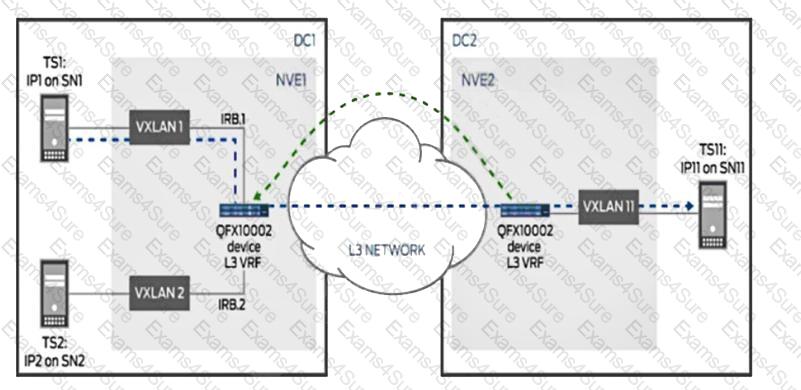
You are asked to establish full connectivity between all devices in the BGP network.
Referring to the exhibit, which two configuration changes will allow BGP route advertisements? (Choose two.)

A Layer 2 connection does not expend across data centers. The IP subnet in a Layer 2 domain is confined within a single data center.
Which EVPN route type is used to communicate prefixes between the data centers?
You are asked to troubleshoot voice quality issues on your newly implement VoIP network. You notice that the voice packets are being dropped. You have verified that the packets are correctly marked for expedited forwarding queue.
Referring to the exhibit, what must you configure to solve the problem?
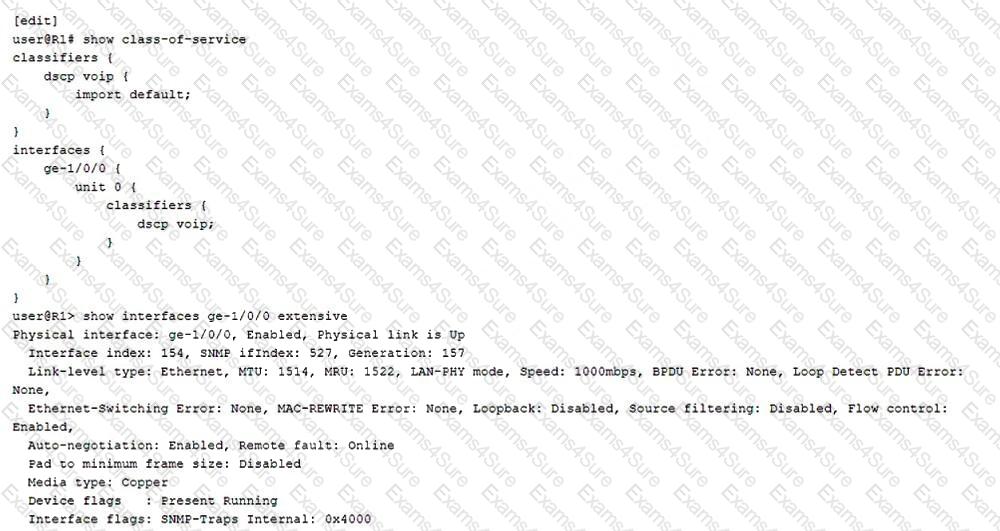
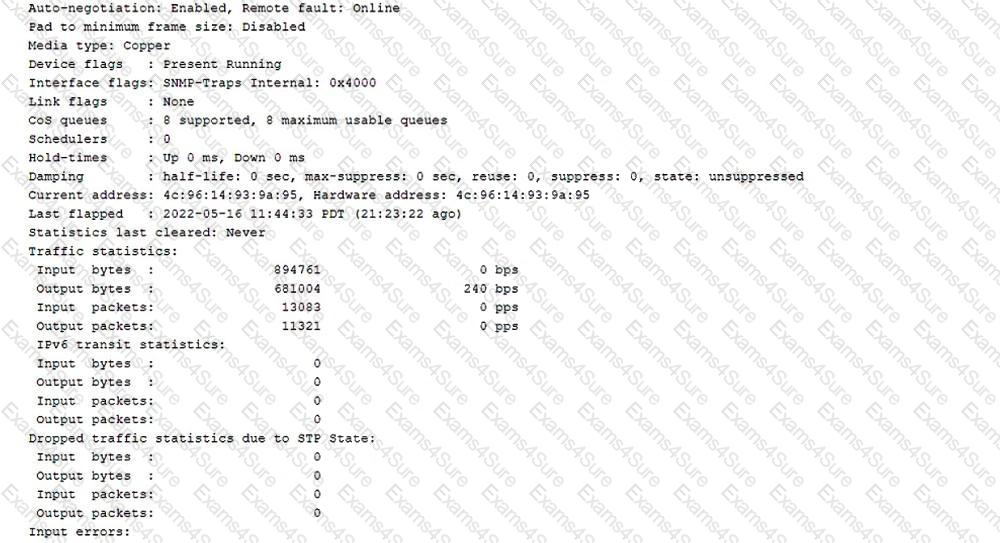
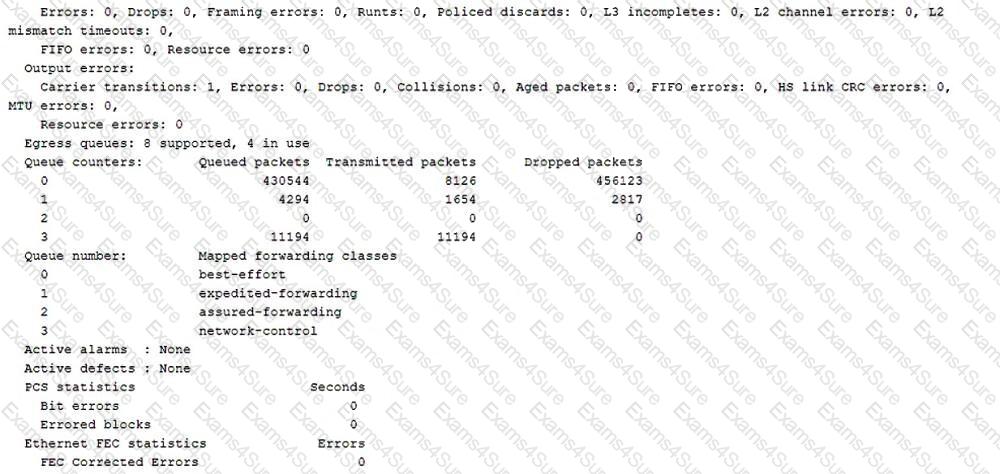
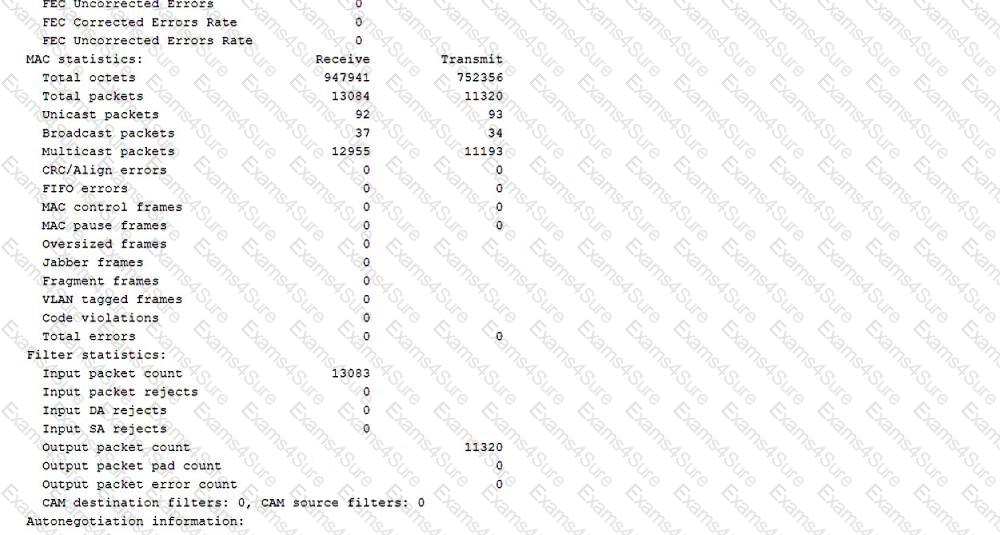
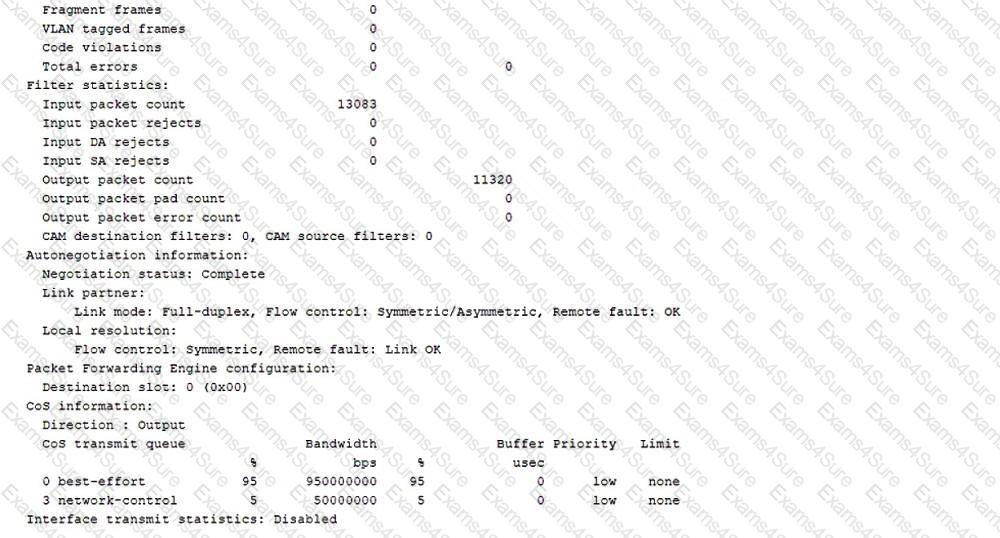
A user is attempting to watch a high-definition video being streamed from the media server over the network. However, the user complains that the experienced video quality is poor. While logged on to router B, a Juniper Networks device, you notice that video packets are being dropped.
In this scenario, what would solve this problem?
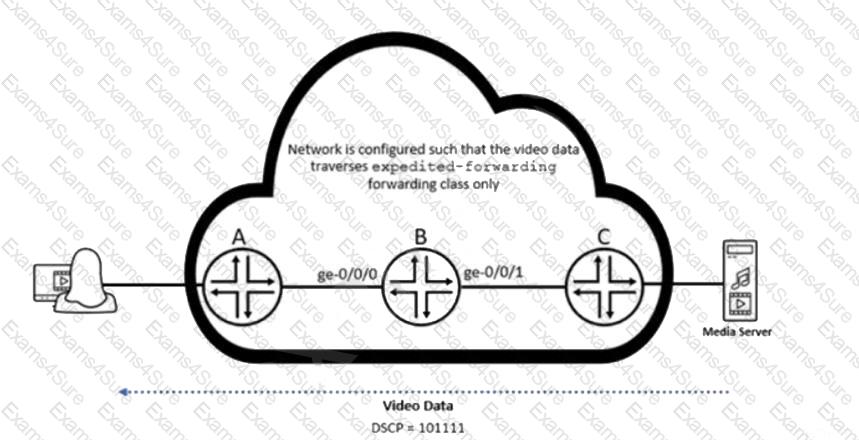
You have scheduled maintenance operations for one of the devices in your OSPF network.
Referring to the exhibit, which three statements are correct? (Choose three.)
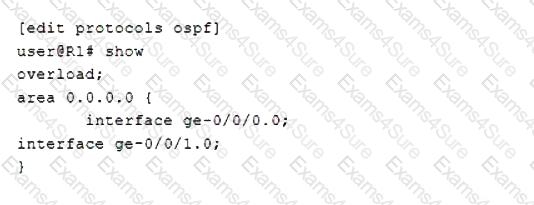
Referring to the exhibit, a PIM-SM network is set up to enable communication between multicast devices.
Which two statements are true? (Choose two.)
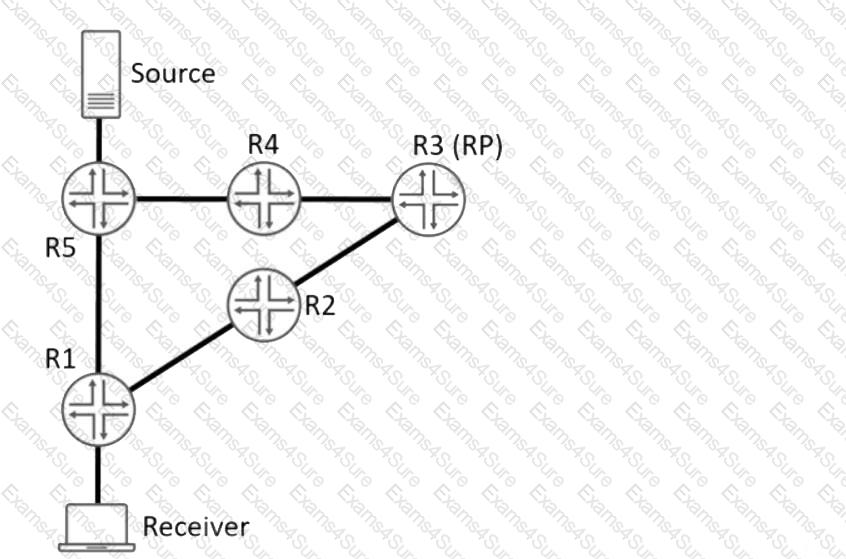


TESTED 29 Mar 2025
Hi this is Romona Kearns from Holland and I would like to tell you that I passed my exam with the use of exams4sure dumps. I got same questions in my exam that I prepared from your test engine software. I will recommend your site to all my friends for sure.
Our all material is important and it will be handy for you. If you have short time for exam so, we are sure with the use of it you will pass it easily with good marks. If you will not pass so, you could feel free to claim your refund. We will give 100% money back guarantee if our customers will not satisfy with our products.